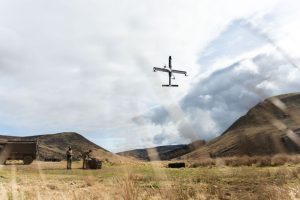Airprox Reality Check: Understanding Drone-Related Incidents and the UK Airprox Board
Introduction
In the rapidly changing world of aviation, particularly with the increased use of drones, comprehending and mitigating risks is vital. The UK Airprox Board (UKAB) plays a key role in investigating near-miss incidents, termed Airprox. An open letter addressed to the UKAB emphasizes the necessity of revisiting how drone-related incidents are managed, especially in terms of visual perception and air traffic control (ATC) interpretation challenges. Let’s explore the concept of Airprox and its impact on drone users and aviation safety.
What is an Airprox?
An Airprox is defined as a situation where, according to a pilot or air traffic controller, the aircraft’s distance, coupled with their relative positions and speed, may have endangered safety. This concept is pivotal for recognizing the risks associated with drone activities, as drones are increasingly integrated into our airspace.
The UK Airprox Board (UKAB)
The UKAB is an independent body tasked with investigating and reporting on Airprox incidents within UK airspace. Comprised of experts from both civilian and military sectors, the board evaluates risks, identifies contributing factors, and proposes safety improvements. Their efforts are essential in enhancing air safety and averting mid-air collisions.
Drone-Related Airprox Incidents
A recent incident involving a police helicopter and a reported drone near Lakenheath highlights the complexities in drone-related Airprox cases. This event signaled a shift in the UKAB’s approach, stressing the limitations of human perception and the necessity for thorough investigation. It also illustrates how pilots may mistake distant aircraft for drones and how ATC might misinterpret evolving situations.
Legal and Regulatory Framework
In the UK, drone operations must comply with specific regulations overseen by the Civil Aviation Authority (CAA), ensuring drone users adhere to safety standards to minimize Airprox risks. Critical regulations include maintaining visual line of sight, following height restrictions, and avoiding controlled airspace.
How to Use Drones Safely
To ensure safe drone operations and prevent Airprox incidents, adhere to these guidelines:
- Maintain Visual Line of Sight (VLOS): Always keep your drone in view to monitor its location and prevent collisions.
- Use Flight Planning Tools: Employ apps and platforms to plan safe routes and evade controlled airspace.
- Stay Below 400 Feet: Adhere to altitude limits to avoid interactions with manned aircraft.
- Avoid Controlled Airspace: Keep away from airports and other restricted areas unless properly cleared.
- Regularly Update Your Drone: Ensure your drone’s software is up-to-date for optimal performance and safety features.
Emerging Trends and Technologies
The infiltration of drones into civilian airspace is propelling innovations in safety technology:
- Aircraft Collision Avoidance Systems (ACAS): These systems alert pilots to potential collisions, enhancing safety in both regulated and unregulated airspace.
- Drone Detection Systems: Developing technologies to detect and monitor drones, assisting in preventing unauthorized drone flights in sensitive zones.
Conclusion
Grasping the concept of Airprox and the role of the UKAB is imperative for drone operators who aim to navigate safely and effectively within the UK’s legal framework. By following safety protocols and staying updated on emerging technologies and rules, drone enthusiasts can actively contribute to a safer aviation landscape. As the drone industry expands, the significance of reporting and investigating Airprox incidents will escalate, ensuring our skies remain secure for all users.













